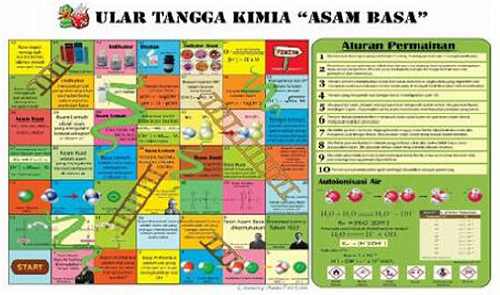
The Practicality and Effectiveness of the Chemical Snakes and Ladders Game on Acid-Base Material on the Learning Outcomes of Class XI SMA/MA Students
Abstract
This research was motivated by the availability of the chemical ladder snake game as a medium for learning acid-base material developed by Amalia Putri Lubis & Iswendi. It is valid but not tested for practicality and effectiveness. This study aims to determine the suitability and effectiveness of the chemical snakes and ladders game. This type of research is a continuation of development research with a Pretest-Posttest Control Group Design and is a 4-D model development. The research population is class XI MIPA students of SMAN 1 Ranah Batahan. Samples takeusing by Simple Random Sampling technique. The research instruments were useful questionnaires and learning achievement tests. The data analysis technique is the practicality percentage technique and the N-Gain test and t-test. The results of the data analysis of practicality are, at a convenient level, for effectiveness the results of data analysis show pretty effective. This is evidenced by the N-Gain percentage of the experimental class of 66% at a somewhatadequate level and the control class of 47% at a less practical level, and supported by hypothesis testing with the t-test, namely tcount (2.6686)> table (2.0106) at the real level α = 0.05 with dk = 48 and chance t0.95.
Keywords
Full Text:
PDFReferences
Afandi, R. (2015). Development of Learning Media for the Snakes and Ladders Game to Increase Student Learning Motivation and Social Studies Learning Outcomes in Elementary Schools. JINop (Jurnal Inovasi Pembelajaran), 1 (1), 77- 89.
Angraeni, V., Muharram, & Alimin. (2018). Influence of the Snakes and Ladders Game in the TGT Type Cooperative Learning Model on Students' Motivation and Chemistry Learning Outcomes. Jurnal Chemica, 19(1), 96- 106.
Badriah. (2015). Effectiveness of the Learning Process With the Utilisation of Learning Media. Communication Lantern Journal. 1(1),1-16.
Falahudin, Iwan. (2014). Utilisation of Media in Learning. Widyaiswara Circle Journal, 1(4), 104-117).
Kemendikbud. (2018). Copy of Permendikbud Number 37 of 2018. Jakarta: Ministry of Education and Culture.
Kustandi, C., & Sutjipto, B. (2016). Manual and digital learning media. Bogor: Ghalia Indonesia.
Lubis, A. P., & Iswendi,I. (2021). Development of the Chemical Snakes and Ladders Game as a Learning Media for Acid-Base Material for Class XI SMA/MA. Edukimia, 3(1), 065-071.
Munadi, Yudhi. (2013). Learning Media: A New Approach. Jakarta: Echoes of Persada.
Rante. P. 2013. Development of Audio-Video Based Learning Multimedia for Dynamic Electricity Experiments in Junior High. JPII Journal, 2(2), 203- 208.
Sadiman, A. (2012). Educational Media: Definition, Development, and Utilisation. Jakarta: PT Raja Grafindo Persada.
Setyosari. 2018. Learning Media in Education. Jakarta: PT. Raja Grafindo
Sugiyono. (2012). Educational Research Methods Quantitative, Qualitative and R&D. Bandung: Alfabeta.
Usmeldi. (2014). Educational Research Methodology. Padang: Padang State University.
Yuliani, K., & Saragih, S. (2015). The Development Of Learning Devices Based Guided Discovery Model To Improve Understanding of Concept And Critical Thinking Mathematically Ability Of Students At Islamic Junior High School Of Medan. Journal of Education and Practice, 6(24), 116–128.
.
DOI: http://dx.doi.org/10.31258/jes.7.2.p.233-241
Refbacks
Copyright (c) 2023 Marina Lantusia, Iswendi Iswendi

This work is licensed under a Creative Commons Attribution 4.0 International License.
Publisher: FKIP Universitas Riau












